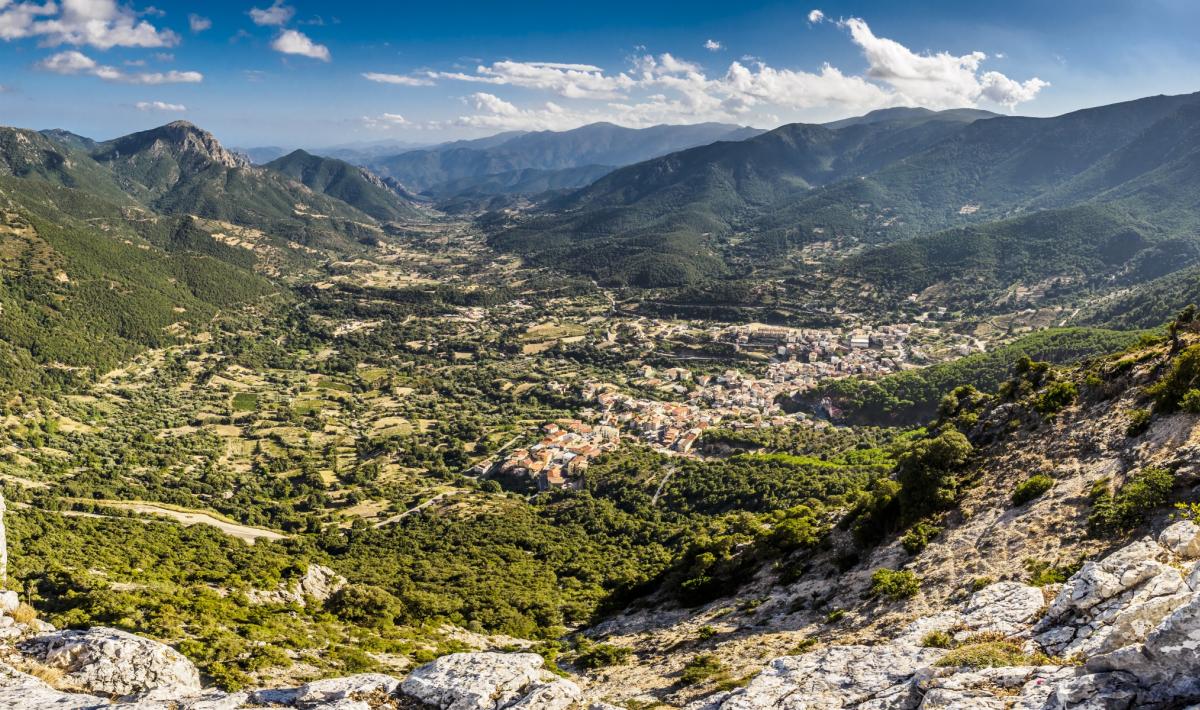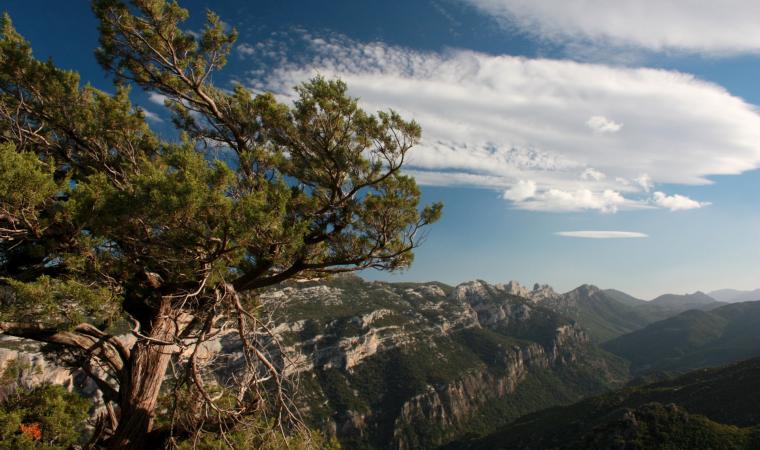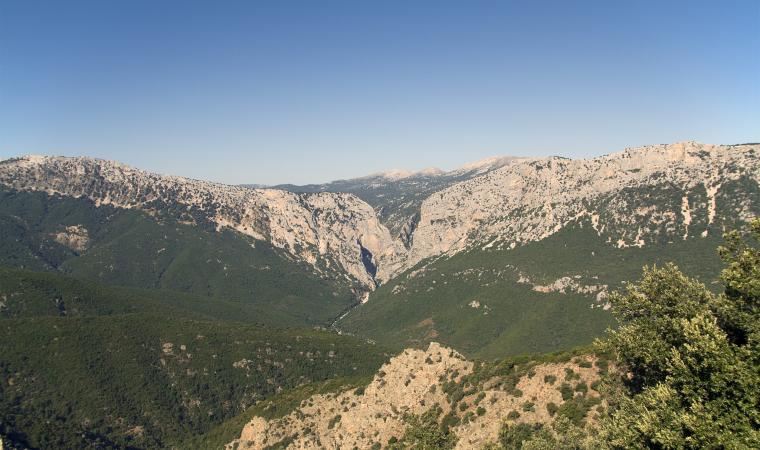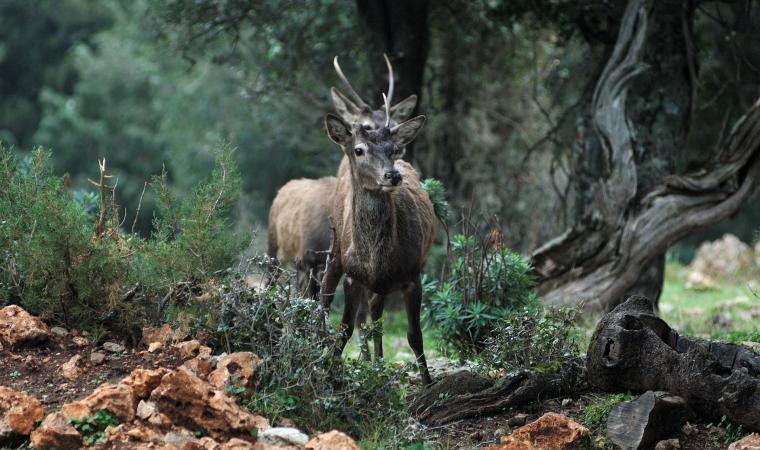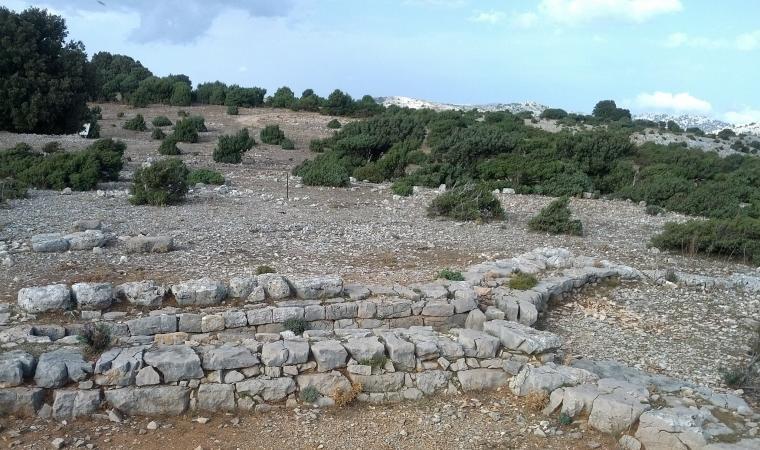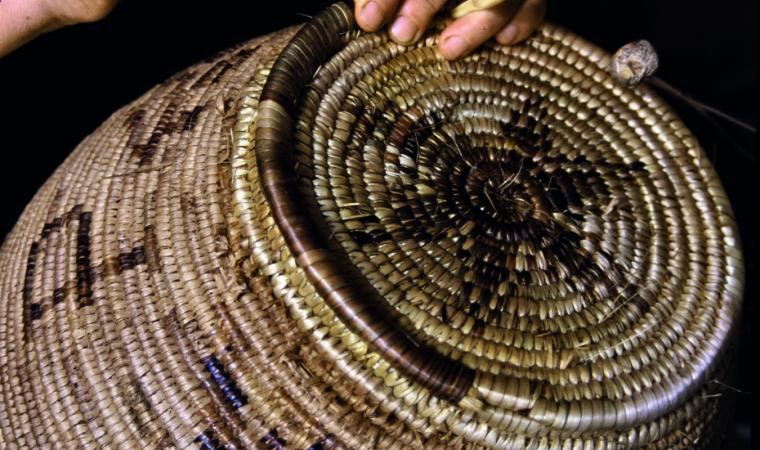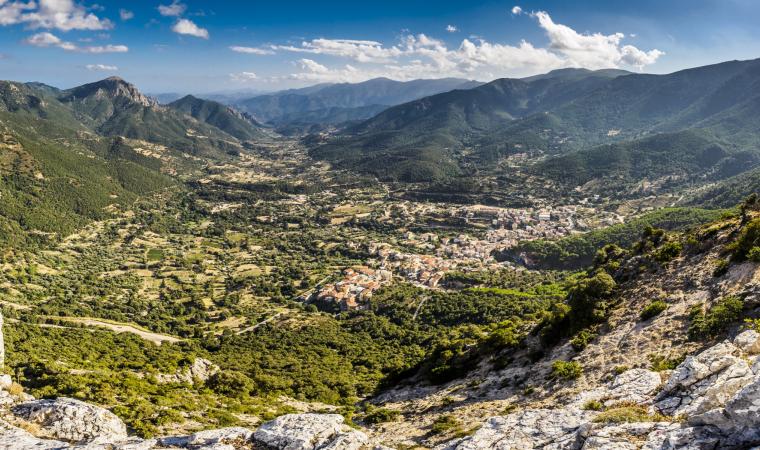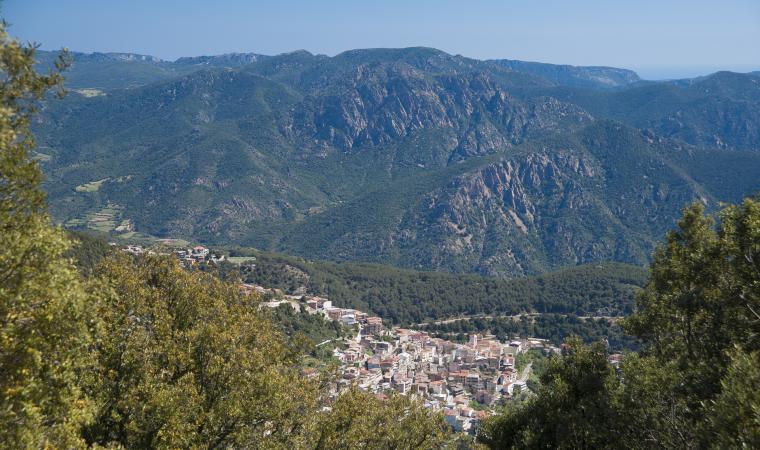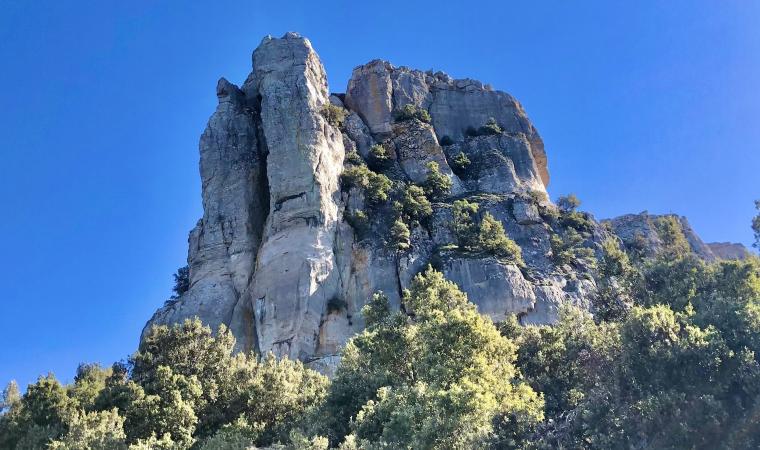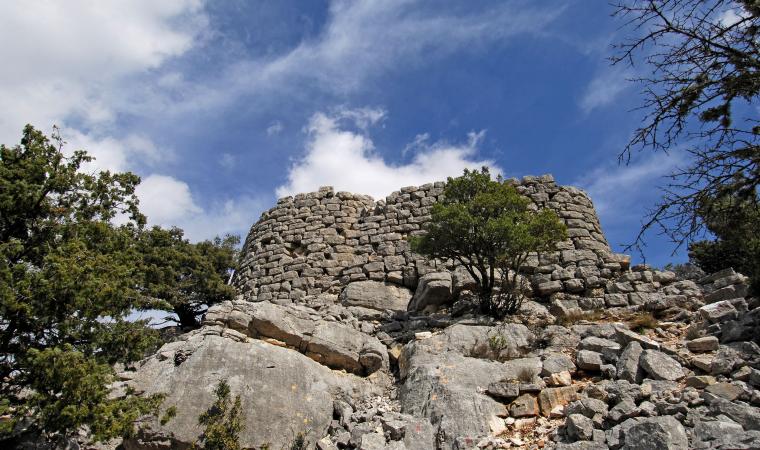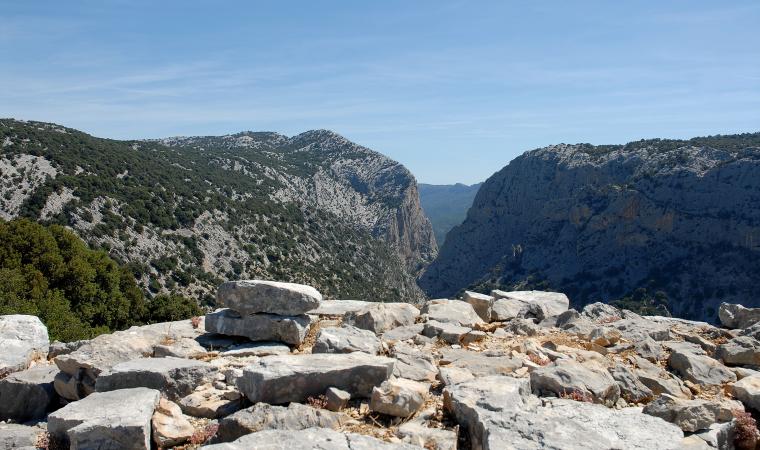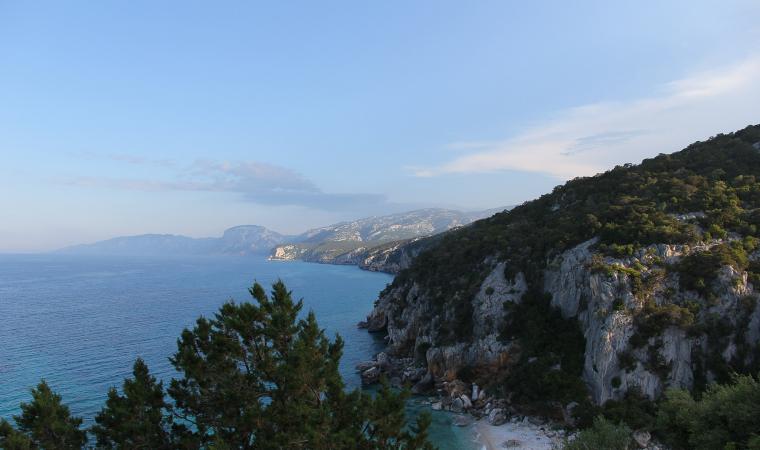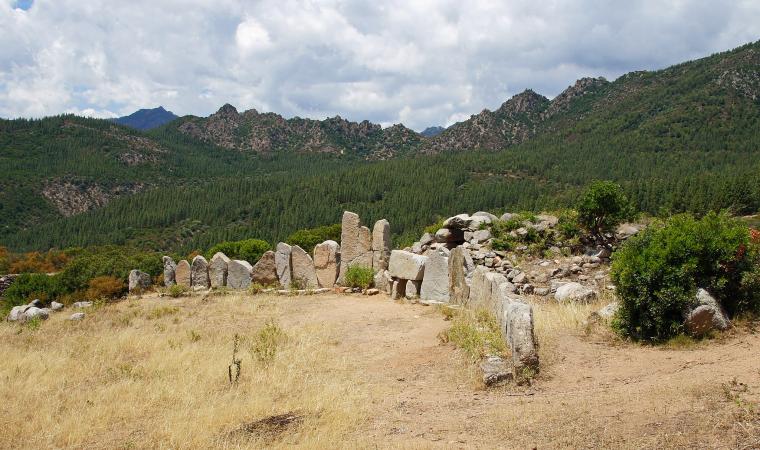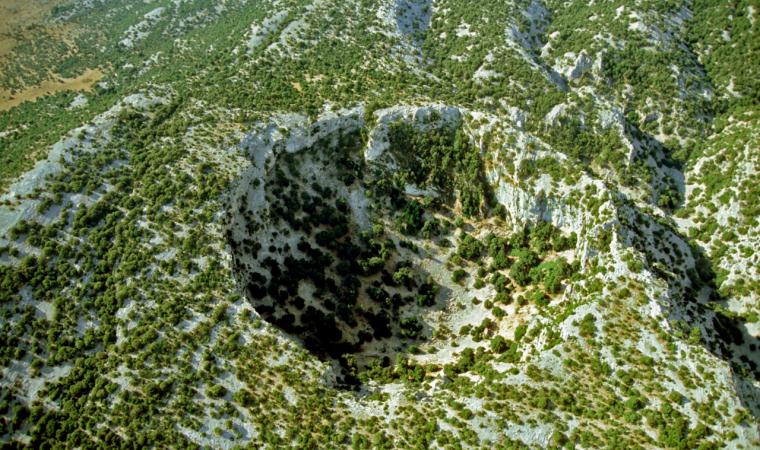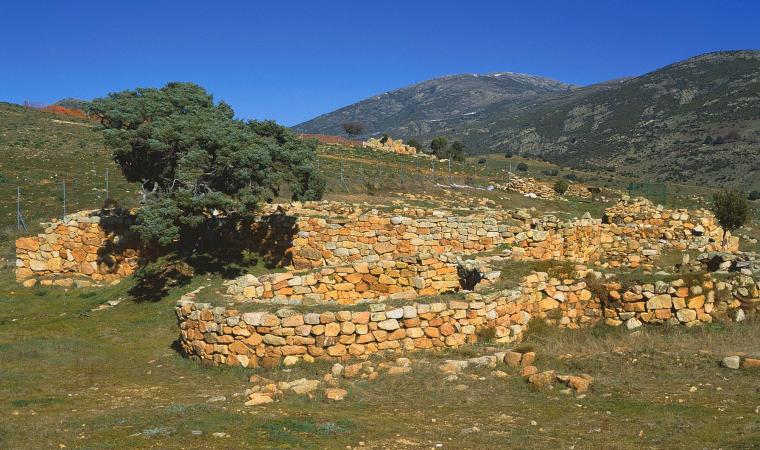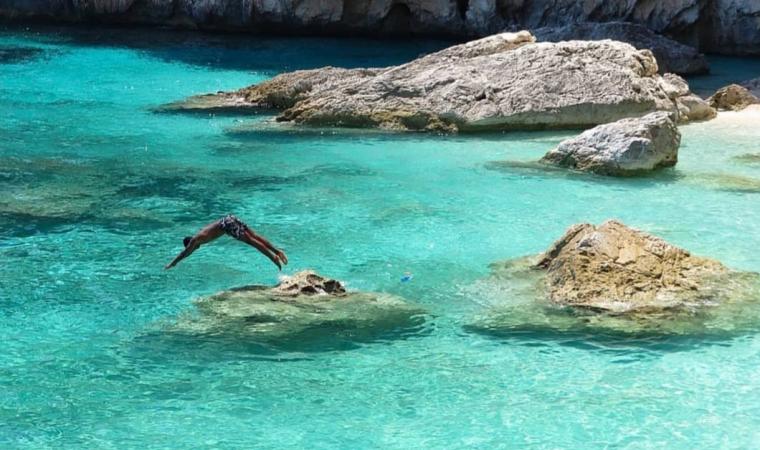Urzulei extends up the slopes of the imposing Monte Gruttas, surrounded by the impervious and wild landscapes of the Supramonte, reaching heights of a thousand metres and replete with ravines, sheer cliffs, chasms, dolines and gullies right up to the sea. A town of 1,300 inhabitants to the north of Ogliastra, Urzulei borders the Barbagie mountain area of inner Sardinia and is dedicated to animal farming, resulting in exquisite delicacies: hams and Guanciale (cured meat from pork or wild boar jowl or cheek) and cheese, including casu marciu, sa frue and caglio di capretto.
On the border with Orgosolo, the deep su Gorropu gorge is truly impressive. At 500 metres in length and 1.5 kilometres wide, it is one of the largest and most spectacular canyons in Europe, modelled over the millennia by the Flumineddu, one of the two major waterways in the area, together with the Codula di Luna, which flows gently to the Gulf of Orosei. Thousand-year-old junipers and yew, holm-oak forests such as su Fennau, and Mediterranean essences fill the valleys, coloured in spring by orchids, peonies, and oleanders. It is the habitat of the mouflon and the golden eagle. In the oasis of sa Portiscra, the Sardinian deer can also be glimpsed.
For centuries, access was limit to Roman rulers, with a third of the territories composed of carbonate rocks pierced by about 200 caves. Standing out are those of su Palu, 15 kilometres of tunnels and rooms similar to fairy-tale worlds, of s'Edera, in which three rivers flow, uniting in a re-emerging torrent in the su Gologone spring; and of su Eni de Istettai, which reaches the heart of the Supramonte, a destination point for speleologists from all over the world. The impervious elevations were largely inhabited during the Nuragic age. The two monumental Tombs of Giants of s’Arena bear witness to this, part of the complex including the Nuraghe Perdeballa, the village Or Murales, one of the largest on the island and bearing over 100 huts, and the hypogeic sanctuary sa Domu ‘e s’Orcu, a grotto overlooking the town, where the statue ‘Mother With Her Dead Son’ was found, a famous bronze exhibited at the National Archaeological Museum of Cagliari. Grottos and sites on the Cammino di San Giorgio can be visited, a pass from which the s’Iscala de su Piscau can also be admired.
The village is embellished with ancient buildings of worship: the 16th-century Chiesa di San Giorgio in Gothic-Aragonese style, the parish church of San Giovanni Battista (17th century) which contains a pink marble altar and a prestigious baptistery, and the quaint church of Sant’Antonio da Padova. The patron saint is celebrated twice - once on 26th April and again at the end of August, when the Palio di Urzulei is held. San Giovanni is celebrated on 24th June. Celebrated a week prior, festivities are held in the small church of San Basilio Magno of the medieval village of Mannorri, having disappeared at the end of the 18th century due to a mysterious series of events that involved feuds and balentia (courage), love and betrayal. Echoes of the past can be found in the music, dance, poetic competitions and in the small houses of the Museo Andalas de Memory. Echoes of the Dionysus worship rituals can be found in the carnival mask of su Mamuthoì’e Bruvera, also called s’Urcu. Every August, the town comes to life for the morra tournament, in which contenders from all over Europe participate. The cuisine is traditional: macarrones imboddiaos, culurgiones, roast suckling pig and kid, lamb cooked in the pan and the sheep dish, ‘Pecora in Cappotto’, venison cacciatore or flavoured with myrtle. All is accompanied by the cannonau wine. Su piggiolu is the bread par excellence.

